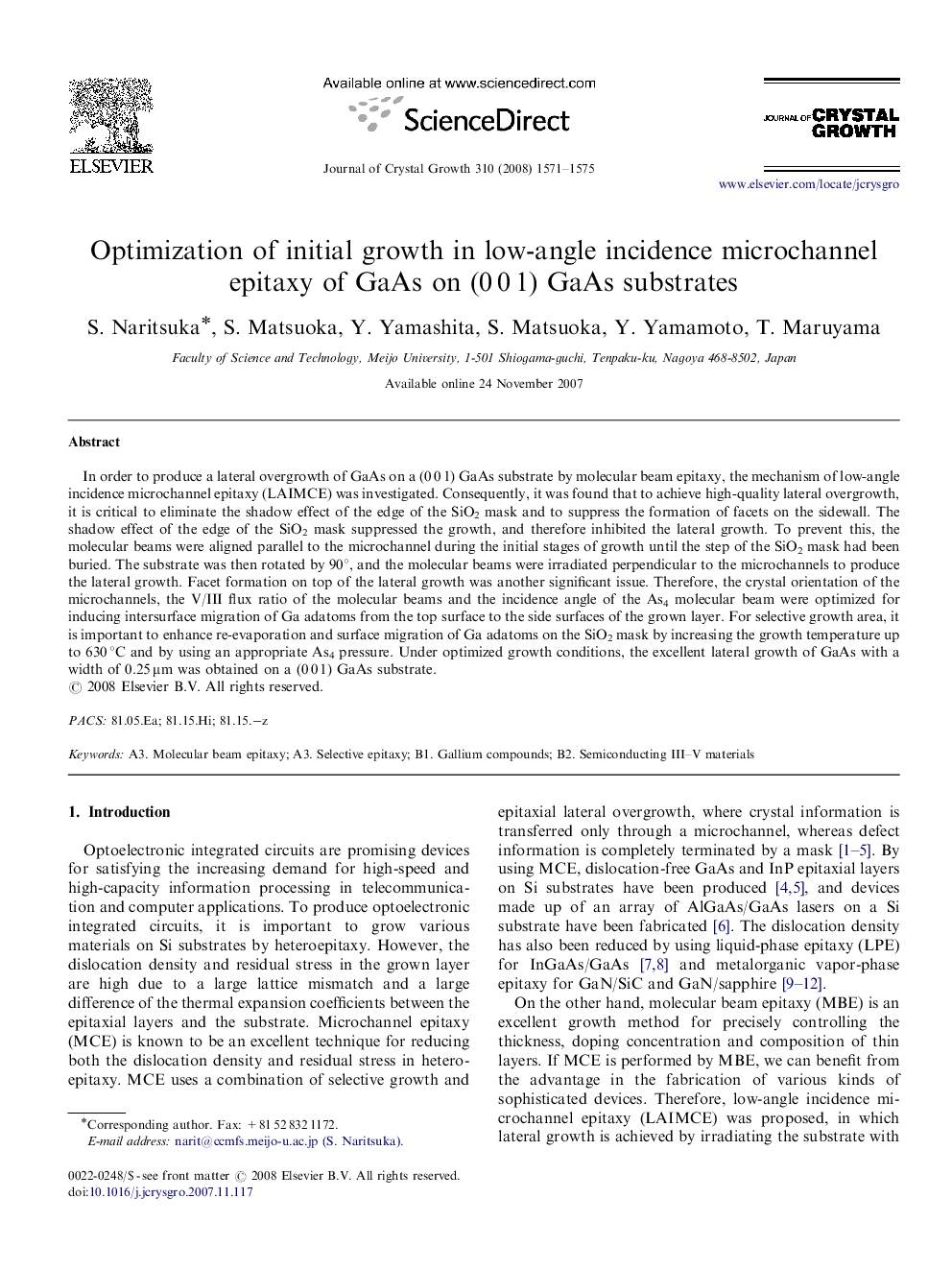| Article ID | Journal | Published Year | Pages | File Type |
|---|---|---|---|---|
| 1795546 | Journal of Crystal Growth | 2008 | 5 Pages |
Abstract
In order to produce a lateral overgrowth of GaAs on a (0 0 1) GaAs substrate by molecular beam epitaxy, the mechanism of low-angle incidence microchannel epitaxy (LAIMCE) was investigated. Consequently, it was found that to achieve high-quality lateral overgrowth, it is critical to eliminate the shadow effect of the edge of the SiO2 mask and to suppress the formation of facets on the sidewall. The shadow effect of the edge of the SiO2 mask suppressed the growth, and therefore inhibited the lateral growth. To prevent this, the molecular beams were aligned parallel to the microchannel during the initial stages of growth until the step of the SiO2 mask had been buried. The substrate was then rotated by 90°, and the molecular beams were irradiated perpendicular to the microchannels to produce the lateral growth. Facet formation on top of the lateral growth was another significant issue. Therefore, the crystal orientation of the microchannels, the V/III flux ratio of the molecular beams and the incidence angle of the As4 molecular beam were optimized for inducing intersurface migration of Ga adatoms from the top surface to the side surfaces of the grown layer. For selective growth area, it is important to enhance re-evaporation and surface migration of Ga adatoms on the SiO2 mask by increasing the growth temperature up to 630 °C and by using an appropriate As4 pressure. Under optimized growth conditions, the excellent lateral growth of GaAs with a width of 0.25 μm was obtained on a (0 0 1) GaAs substrate.
Keywords
Related Topics
Physical Sciences and Engineering
Physics and Astronomy
Condensed Matter Physics
Authors
S. Naritsuka, S. Matsuoka, Y. Yamashita, S. Matsuoka, Y. Yamamoto, T. Maruyama,
